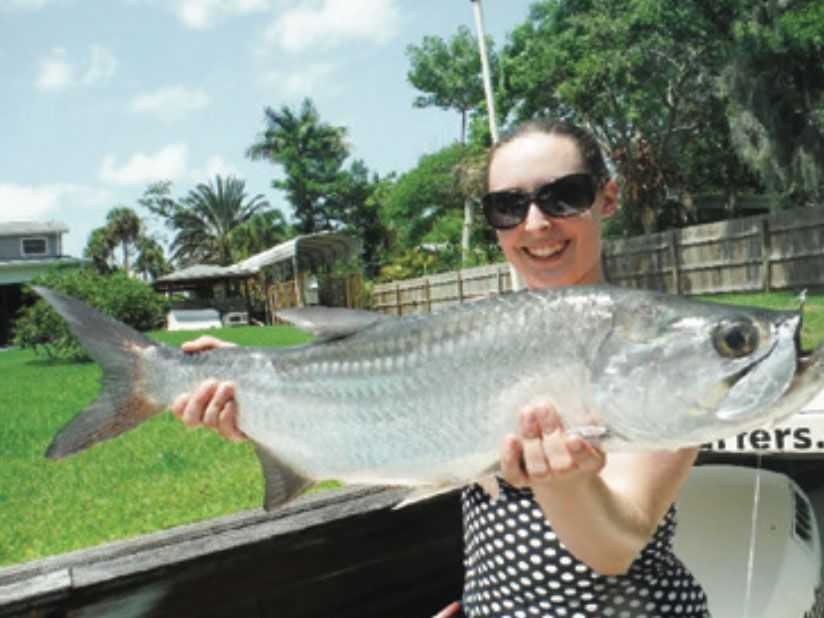Summer is here and the fishing is hot! Seasons don’t really change much here on the Space Coast. It kind of just goes from warm in the fall, winter, and spring. To superhot in the summer! The air gets increasingly heavy with tropical moisture and afternoon showers become an everyday occurrence. Hurricane season brings the threat of nasty weather and big surf, but also the potential for some outstanding “outflow/culvert” fishing. The beauty of our Space Coast fishery is easy to see this time of year. One of the things that make our lagoons so fishy; is our geographic location! Nestled on the convergence of tropical and sub-tropical climate zones with ocean influence, and over 100 miles of lagoon for fish to travel this watery wonderland; we get many visitors. Our year round resident fish have many summer friends to share the flats, mangroves, beaches, and Inlets with. Some never leave, but only move to different locations in the winter. Only to come from their hiding spots and join their brethren who “migrate” up when the days get long. I’m going to cover some info, tips, and tactics for one of my favorite summer targets.
Mangrove Snapper (other names; gray snapper, black snapper, Mango’s): The Mangrove Snapper (Mango’s) are a species that basically disappear in the cooler months. Some can still be found, but not anything to really speak about. Summer time warm waters are what make them happy, and we have tons of places for them to “squat” until it cools again. The Mango’s will move up the Indian River Lagoon (IRL), but will also enter the lagoon from the Atlantic Ocean via Sebastian Inlet, Port Canaveral, and Ponce Inlet. Most will range from 1-3lbs. and make excellent dinner guests. In fact, Mango’s are one of only three fish I specifically target for meat in the lagoons (Black drum, and sheepshead round-out that list). These aggressive schooling fish are predominantly found on structure, pilings, and as their name suggests Mangrove shorelines. Most mango’s are typically caught with live baits like shrimp, mud minnows, mullet, pilchards, or pogies that are 2-4inches in length. A main line of 10-20lb. braid with a three foot leader of 20-30lb (mono or Fluorocarbon) will cover most situations, but you may get smoked by a real big one. Fish close to the “structure” that has the mango’s on it, and live chumming can be very effective if you have the bait capacity to do so. A “live bait” J-hook in sizes from 1/0-(size) 2 depending on bait size is what I like for this fast hitting fish. Add a split shot or small lead sinker to get it down a bit, but don’t use too much lead and kill the baits action. Jig heads can also achieve this, but can get costly after a few breakoffs. With a 5 per angler/a day limit, and the size needed being 12inches or larger; Mango’s are a spectacular way to fill your cooler on the space coast

